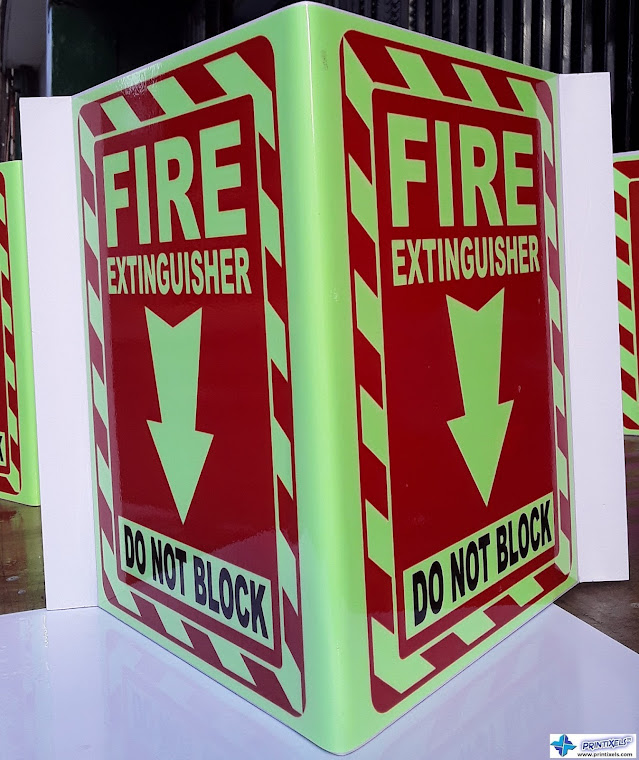
This is where fire extinguisher signs become indispensable. In the Philippines, where adherence to fire safety regulations is strictly enforced by the Bureau of Fire Protection (BFP), understanding the types and materials of these signs is not just about compliance, but about ensuring public safety.
The primary function of a fire extinguisher signage is to provide high visibility for the location of emergency equipment. These signs are typically bold and graphic, designed to be instantly recognizable even under stressful conditions.
The primary function of a fire extinguisher signage is to provide high visibility for the location of emergency equipment. These signs are typically bold and graphic, designed to be instantly recognizable even under stressful conditions.
Common types observed across Philippine establishments include:
Location Signs: These are the most common, often rectangular or square, placed directly above or beside the fire extinguisher. They usually feature the universal fire extinguisher pictogram, often accompanied by text like "FIRE EXTINGUISHER" or "APPARATUS."
Directional/Arrow Signs: Used when the extinguisher is not immediately visible from a distance, these signs incorporate arrows to guide individuals towards the equipment. They are often placed in corridors or large open spaces.
Instructional Signs: While not solely for location, these vital signs are often affixed near the extinguisher, illustrating the "PASS" method (Pull, Aim, Squeeze, Sweep) for proper usage. Some might also detail the types of fires the extinguisher is suitable for (e.g., Class A, B, C).
Photoluminescent (Glow-in-the-Dark) Signs: Crucial for the Philippines, a country prone to power outages and natural disasters. These signs absorb ambient light and emit a glow in darkness, ensuring the extinguisher remains visible even during blackouts or smoke-filled conditions. BFP mandates the use of such signs in many establishments for enhanced safety.
"Keep Clear" Signs: Often a simple text-based sign, reminding people not to obstruct the fire extinguisher's access path.




The choice of material for these signs is critical, influencing their durability, visibility, and cost-effectiveness. In the Philippine market, several materials are commonly utilized:
- PVC (Polyvinyl Chloride) / Sintra Board: This is perhaps the most widely used material due to its affordability, lightweight nature, and ease of printing. PVC signs are durable for indoor use and offer excellent color retention. However, prolonged exposure to direct sunlight or harsh outdoor elements can cause them to fade or become brittle over time.
- Acrylic: Offering a more premium and aesthetically pleasing finish, acrylic signs are more robust than PVC and provide a glossy, sleek appearance. They are more resistant to UV radiation and moisture, making them suitable for both indoor and semi-outdoor applications where a cleaner look is desired. They are, however, generally more expensive.
- Aluminum: For maximum durability and weather resistance, aluminum signs are a top choice. They are rust-proof, resistant to extreme temperatures, and can withstand harsh outdoor conditions, making them ideal for industrial facilities, parking lots, or building exteriors. While more costly, their longevity often justifies the investment.
- Photoluminescent Vinyl/Sheets: These materials are often applied as a top layer onto PVC, acrylic, or aluminum substrates. The vinyl contains phosphorescent pigments that charge from light sources and then glow in low-light or no-light conditions. This feature is paramount for compliance with BFP regulations, ensuring visibility even during power failures.
Beyond the base material, the printing method also plays a role. Most signs are produced through digital printing, silk-screen printing, or vinyl decal application, ensuring vibrant colors and sharp graphics compliant with BFP's specific size, color (typically red, white, and green), and pictogram requirements.
In conclusion, fire extinguisher signs are more than just markers; they are silent, life-saving indicators. The diverse types cater to various situational needs, while the selection of materials – from cost-effective PVC to durable aluminum and essential photoluminescent variants – addresses durability, visibility, and compliance requirements in the Philippine context. Investing in high-quality, BFP-compliant signage is a fundamental step towards a truly fire-safe environment.
In conclusion, fire extinguisher signs are more than just markers; they are silent, life-saving indicators. The diverse types cater to various situational needs, while the selection of materials – from cost-effective PVC to durable aluminum and essential photoluminescent variants – addresses durability, visibility, and compliance requirements in the Philippine context. Investing in high-quality, BFP-compliant signage is a fundamental step towards a truly fire-safe environment.


























0 Comments:
Post a Comment